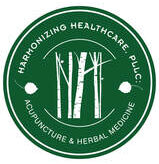In Oriental Medicine the saying is:
“If there is free flow, there is no pain;
If there is no free flow, there is pain”
So, if you are experiencing pain, this means Qi and Blood is not flowing freely in your body and things are stuck.
What causes this? Well, many factors can be involved to get to this point, but it all comes down to either excess or deficiency. If you have excess in your body, there is a blockage obstructing the flow. If you are on the deficiency side, there is not enough Qi or Blood for the flow to run smoothly. Think of a river where the water is low. The water gets stuck and pools in spots because it cannot flow freely. The stuck water then sits there and harbors bacteria and growth of unwanted substances.
To treat this problem of “flow”, Oriental Medicine can use a number of modalities, including acupuncture needles, moxa, bodywork techniques using Tuina or Shiatsu, and Chinese herbs. The most common method is acupuncture needles, where tiny, sterile, filiform needles are inserted into specific acupuncture points to either break up the blockage that is causing the obstruction or boost the Qi and Blood so that it can flow smoothly. The acupuncture points or “acupoints” chosen are very individualized to the patient and depend on what their Chinese Medical Diagnosis is. In Oriental Medicine or Traditional Chinese Medicine, the root of the problem is being treated, not the symptoms. If 10 people come to the clinic with headaches, they would all be treated differently, using different acupoints and would all have different herbal formulas, as Chinese herbs are also a very effective treatment. The headache is only a symptom of an underlying pattern of imbalance. This is why so many detailed questions are asked at an Oriental Medicine clinic. We are figuring out what your individual pattern is and every symptom you are experiencing is a clue.
